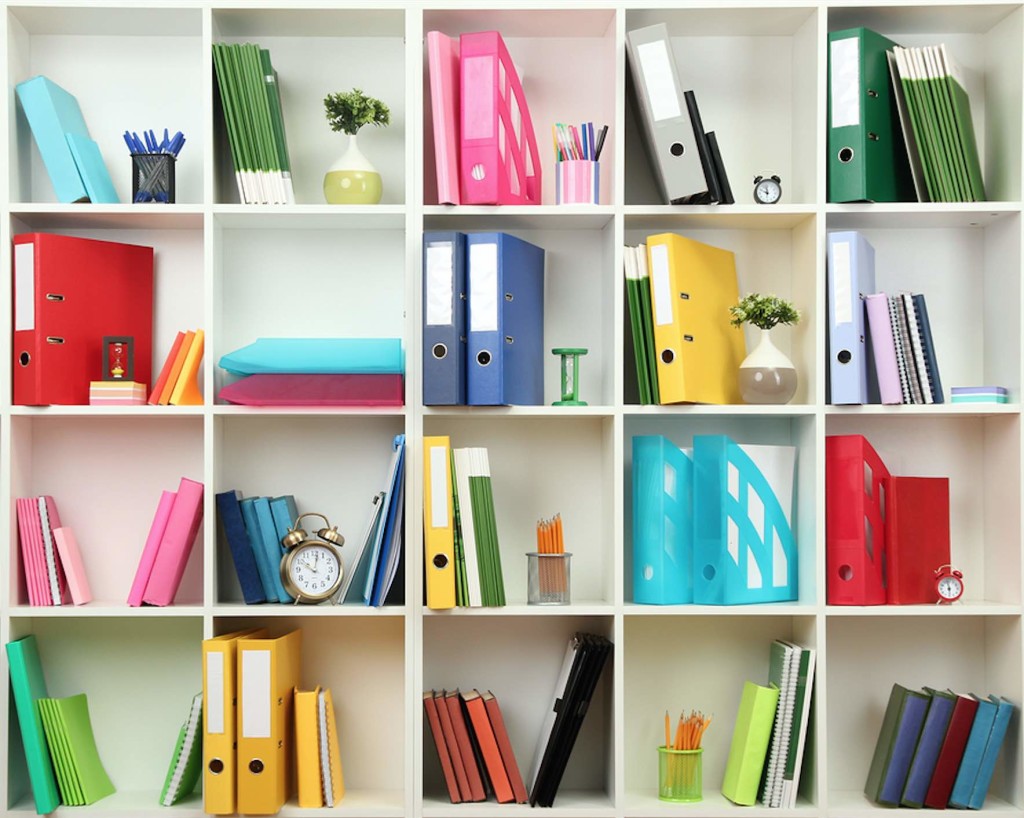Paperwork.
Ugh!
If you don’t keep on top of filing your papers you’ll find yourself having to deal with hours of work.
Whether you run your own home business or are responsible for the household filing, we’re going to look at folder organization and folder labelling.
Sounds boring, right? Trust me, clearing your workspace and decluttering those annoying paper piles will make you feel more organized and productive.
I’ll show you how to get started in 7 simple steps.
We’ll start with the basics of:
- how you can file your papers
- who we need to file things for
- what kinds of filing and labelling to use
- where you have space to store your filing
- when you should be doing your filing
- why you need to file certain things, and
- why choosing digital over paper might be a better option.
Organizing Your Paperwork
Step 1: Method of Filing
Decide how your going to file your papers. It may be:
- Concertina folders
- Manilla folders
- Clear plastic sleeves
- Two or three pronged binder folders
- Storage boxes
- Hanging files
Once you’ve decided on your method of filing, check that you have plenty of your chosen supplies available
so you’re ready to start and complete this step.
Step 2: Storage of Filing
Where are you going to store your files? It may be:
- Hanging files in your desk drawer
- Boxes stacked neatly in a cupboard
- Binder folders stacked neatly on a bookshelf
- Manilla folders stacked neatly in boxes
Once you’ve decided on your storage preference, check that you have plenty of space to accommodate that choice and room for growth if needed.
Step 3: Filing Labels
What kind of labels will you use? It may be:
- Colors indicating categories or years
- Hand written across the file
- Printed labels
Once you’ve decided on your method of labelling your files, check that you have supplies you need (markers, inks, labels, paper) for ongoing labelling needs.
Step 4: Categories For Filing
Who are you filing for? It may be:
- Taxation office requirements
- Utility supplier bills
- School accounts
- Housekeeping; receipts, coupons,
- Warranties on purchased items
- Kids artwork, reports, photos
Once you’ve decided on your categories for filing, you can start applying your logic using your checkpoints from step 1-3.
Step 5: Reasons for Filing
Why do you need to file certain things? It may be:
- Taxation office requirements to store years of history in case you come under review. This length of time is different in each country. You can find information about keeping records here: UK, USA, Australia.
- Utility supplier bills for reference. Sometimes mistakes are made so it’s good to keep a couple of previous bills on hand for reference.
- School accounts may need to be kept as reference but can be sorted through each year .
- Housekeeping; receipts for any problems with damaged goods, coupons for upcoming promotions.
- Warranties on purchased items that need to be kept if you wish to have a hassle-free exchange. Many warranties are online now but with paper warranties I also keep any spare parts that came with the purchase.
- Kids artwork, reports, photos or any momento that you feel you want to keep. You can sort through these each year, or allocate a certain amount of space so that once your limit is reached things need to be culled.
Once you’ve decided on your reasons for filing, this might eliminate or perhaps add more categories to your workings in Step 4. Choosing supplies that are easily available and at the ready will mean you can adapt your filing system as your needs grow.
Step 6: Finding Time For Filing
When should you do your filing? It may be:
- Straight away. Set your filing system up so that it is easily accessible and easy to manage.
- Weekly. Allocate a space for filing, and spend 10-20 minutes each week filing the documents.
- Monthly. I wouldn’t recommend any filing tasks to be put off for more than one month. This is where molehills become mountains. Realistically, if you have set your filing system up well, then you won’t mind spending a short time each day or week filing things away.
Once you’ve decided on your frequency of filing, make a note in your diary/phone/calendar and schedule that time. Make it a priority and stick to it.
Step 7: Paper Vs Digital
If you have abandoned paper bills and mostly deal with online accounts then you can adapt the strategies above to storing your paperwork in organized files on your computer.
Alternatively, if you prefer a paper-based system, then consider the benefits of going digital. It will:
- Be better for the environment
- Reduce the amount of paper you need to deal with
- Remove stacks of paper and clutter from your life.
One further step for those who are going to switch to digital paper trails. Automatic billing can save you time and give peace of mind that your bills are paid on due dates.


Pingback: Methods to Cope Being Again at Work after the Holidays – Hercolav
Pingback: 9 Ways to Organize Your Home - Wellington & Franklin
Hanging files are called Pendaflex Folders. Yoir file drawer must have a metal frame inside to hold the folders.